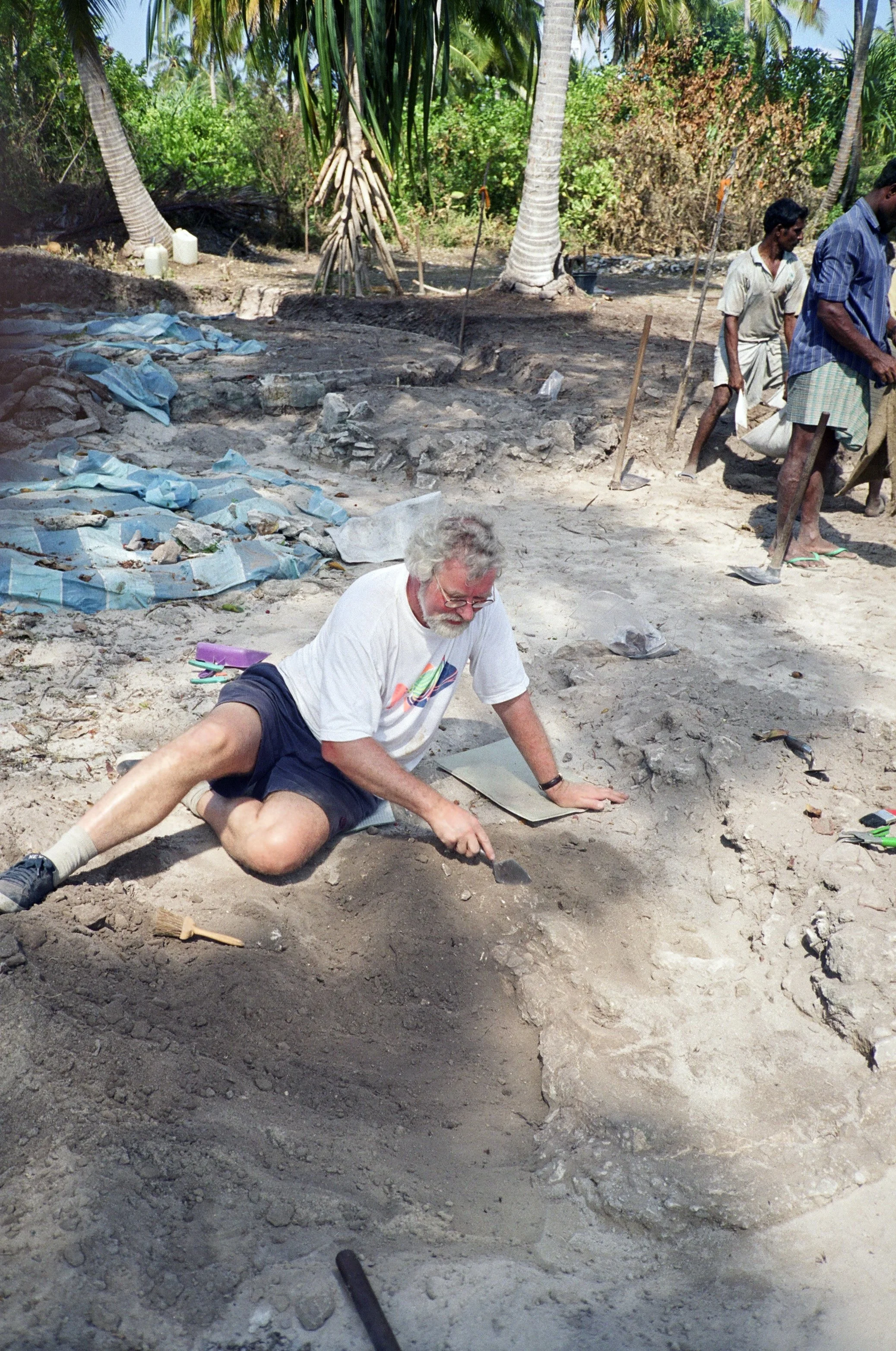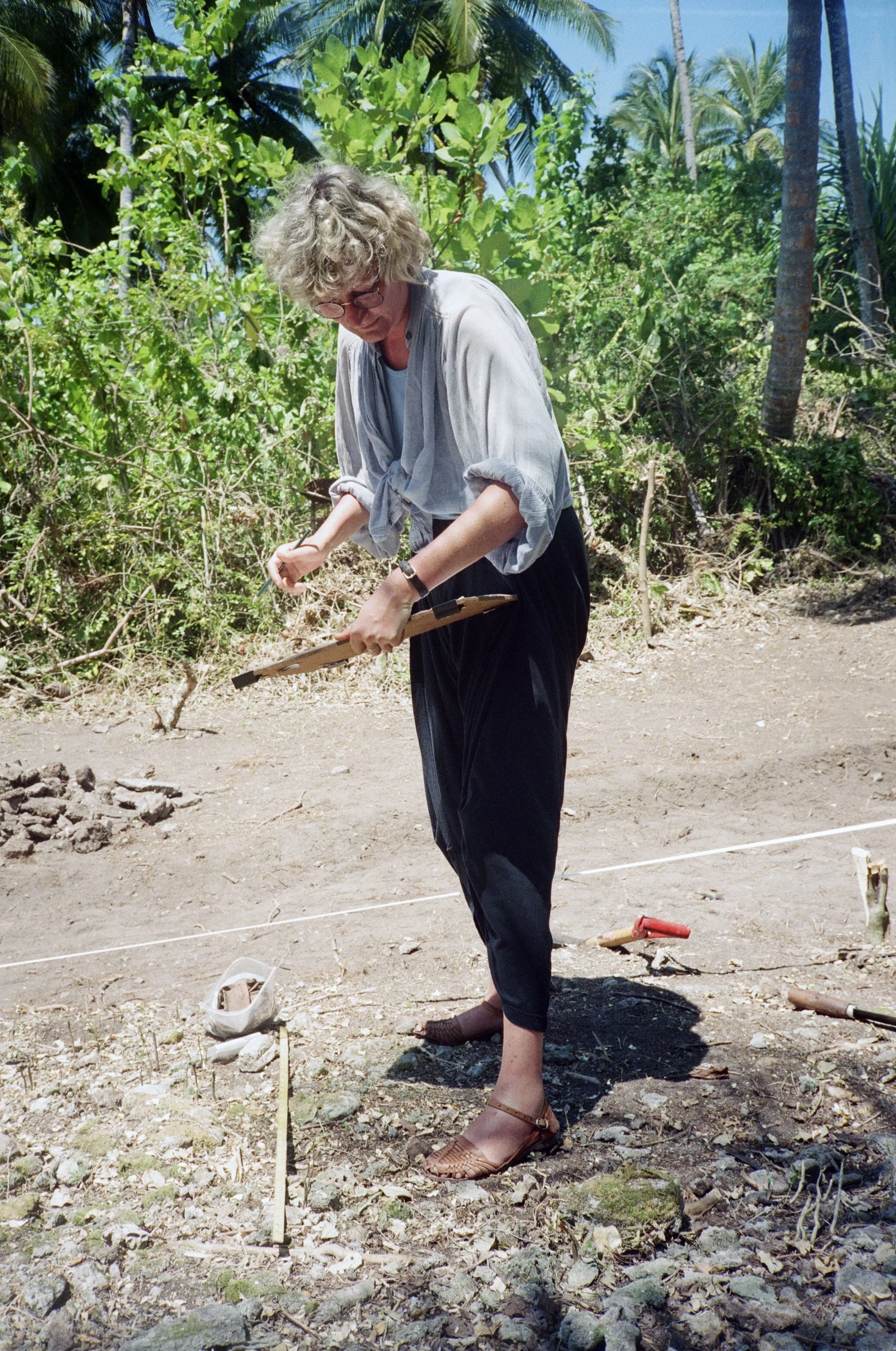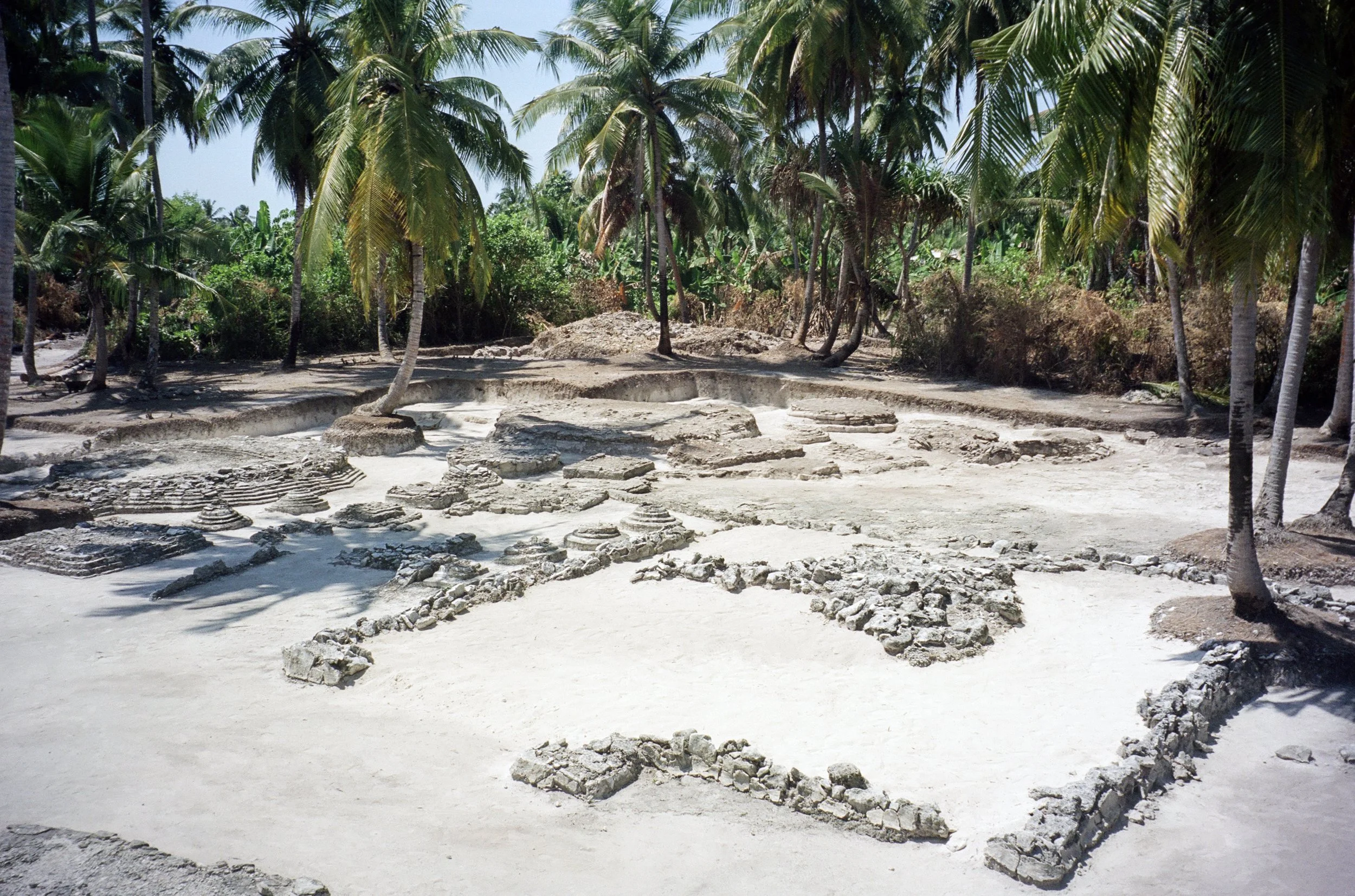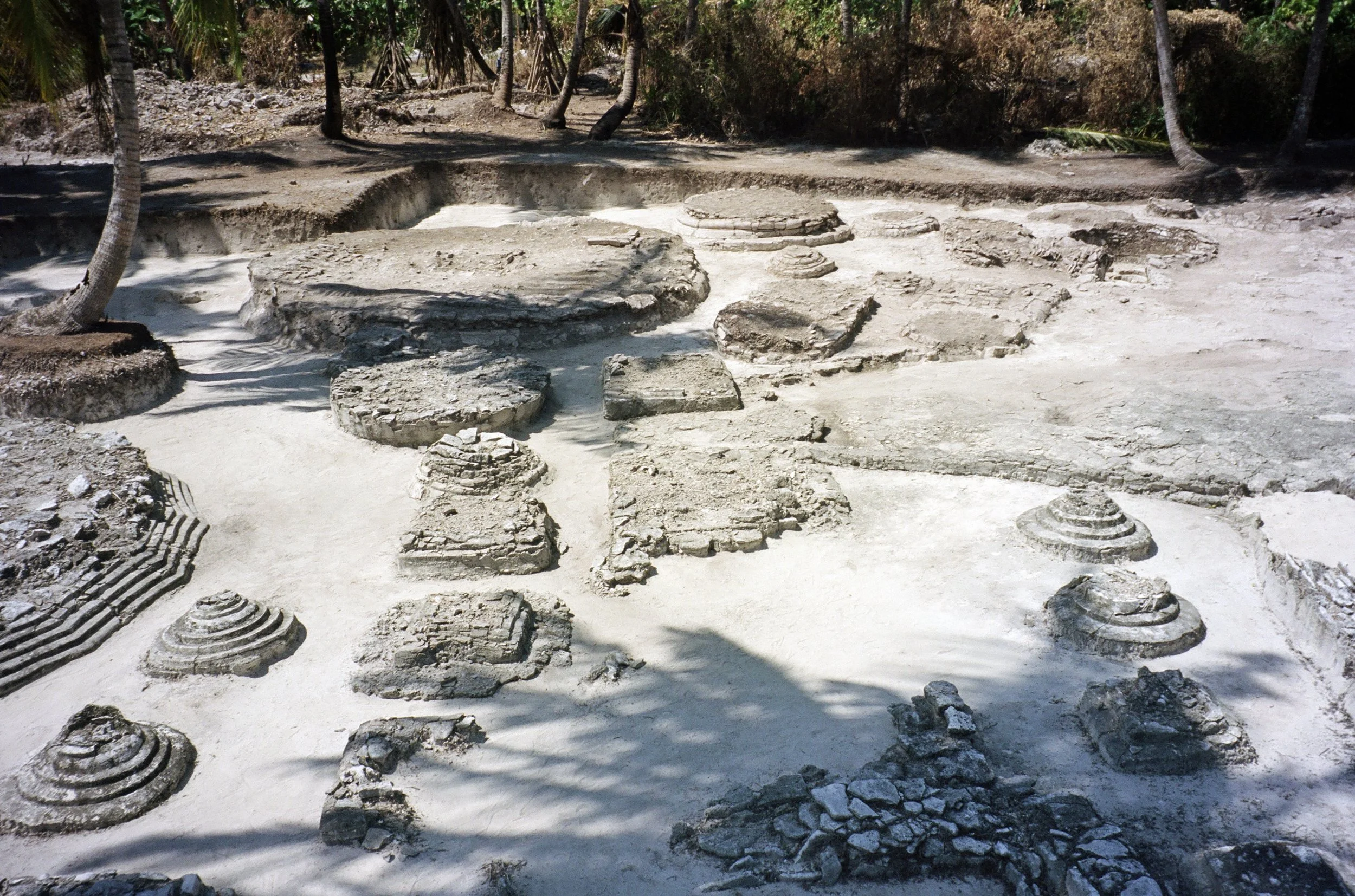The Archaeology of Buddhism in the Maldives
Have you heard of the small island nation of the Maldives? This archipelago, best known as a tropical holiday destination in the Indian Ocean, consists of 1,192 coral islands, surrounded by sun-drenched beaches and turquoise seas. Now, readers can delve deeper into the islands’ past in a newly published book by Norwegian archaeologist Egil Mikkelsen: The Archaeology of Buddhism in the Maldives.
Interested in the book? Download flyer and order direct from the publisher.
Professor Egil Mikkelsen is a prominent figure in Norwegian archaeology. He served as Director of the Museum of Cultural History at the University of Oslo from 1999 to 2011 and was a board member of the Kon-Tiki Museum from 1998 to 2006. Mikkelsen is also among the few Norwegian archaeologists to have dedicated a significant part of his career to fieldwork beyond Norway’s borders.
At the outset of his career, his research focused on the Norwegian Stone Age—particularly how Mesolithic foragers adapted to changing environments, and how agriculture emerged and developed in Norway. He has also explored the role of hunting, including the hunting of wild reindeer, in shaping Viking Age and Medieval societies.
In 1993–1994, he participated in The Christianization of the Nordic Countries, an interdisciplinary research project, where he examined connections to the East—specifically, links to Buddhist and Islamic cultures and religions during the Viking Age.
Egil Mikkelsen during excavations on the Maldives in 1984 (Photo: The Kon-Tiki Museum).
Egil Mikkelsen took part in Thor Heyerdahl’s second expedition to the Maldives in 1984, participating in archaeological excavations on the islands of Nilandhoo and Gaaf Gan. One notable discovery from these excavations was cowrie shells. Mikkelsen learned that the inhabitants of the Maldives had used cowries as a form of currency and engaged in extensive trade involving the shells. This naturally led to the question of what role cowrie shells may have played in the islands’ pre-Islamic Buddhist culture.
On the completion of the excavation of havitta on Nilandhoo, Faafu Atoll in 1984. From left: Arne Skjølsvold, Øystein Koch Johansen, Thor Heyerdahl, and Egil Mikkelsen (Photo: The Kon-Tiki Museum).
Similar shells have been found in three female graves in Northern Norway, north of the Arctic Circle, dated to between AD 600 and 800. The discovery of a tropical currency in an Arctic context was so intriguing that Professor Mikkelsen set out to learn more—investigating how such a wide dispersal was possible and what trade routes might have facilitated it.
Professor Mikkelsen’s interest in the trade of cowrie shells led him back to the Maldives, where he directed three field seasons in 1996, 1997, and 1998, focusing on the excavation of a Buddhist monastery on the island of Kaashidhoo. The project excavated approximately 1,800 square meters of the site and documented that the monastery had been in use from around AD 200 to 1500.
The book’s main focus, as Professor Mikkelsen himself writes in the introduction, “…has; of course, been on the excavations of the Buddhist monastery at Kaashidhoo, the uncovering of the ruins and finds there and the interpretations of these. The site is also seen in a local and regional context, and lines are drawn to neighboring countries around the Indian Ocean and beyond to make comparisons with other Buddhist sites. Archaeological as well as written sources are used, and natural sciences are crucial to obtain datings and determinations of faunal remains.
Egil Mikkelsen during excavations (Photo: Egil Mikkelsen).
Solbritt Benneth, co-director of the project, documenting the site (Photo: Egil Mikkelsen).
As the cowrie shells were the starting point of my interest in the Maldives, I also study the internal handling of these shells within the Maldives, their role in trade, and their importance in Maldive Buddhism. Some examples of the spread of cowrie shells are referred to in a wider world perspective. I also use Buddhist finds in the Maldives to contribute to the stories about conversion from Buddhism to Islam, said to have taken place in the 12th century.” (Mikkelsen 2025:IX-X).
The entire project team of the 1998 excavation-season at Kaashidhoo (Photo: Taken by an anonymous local individual, permission by author).
The project documented three phases of the Buddhist monastery at Kaashidhoo. An initial phase starting in the 3rd century AD and continuing to c. AD 600. This is documented through some postholes, a plastered floor and a well. In the next phase, beginning at AD 600, many miniature stupas and other small structures were built. Clam-shell deposits are intentionally laid down to mark the foundation of these structures. The last phase, lasting from c. AD 1035-1420, are only documented by four graves at a burial site next to the monastery.
Most probably, the monastery was established with a bodhighara (ruin I) and an asanaghara (ruin II), constituting the biggest structures on the site. This is documented by the earliest radiocarbon dates from the site, AD 220-610, from a big deposit of 62.000 cowrie-shells found in connection with the asanaghara.
Plastered floor (ruin XL) with many other ruins (Photo: Egil Mikkelsen).
From ruin XXIII to ruin LIX (Photo: Egil Mikkelsen).
Northern part of excavated area (Photo: Egil Mikkelsen).
The project documented in this book was done in collaboration with Abbas Ibrahim, the chairman of The National Centre for Linguistic and Historical Research in The Maldives, and in part sponsored by The Kon-Tiki Museum, Thor Heyerdahl’s Research Foundation.
Season 1: 22 February to 7 March 1996.
Season 2: 3 March to 20 March 1997.
Season 3: 24 February to 12 March 1998.
Participants:
Solbritt Benneth, Museum of Medieval Stockholm, Sweden. Archaeologist and museum director, in charge of drawing documentations.
Faruhathu Ali Mohammad, National Council for Linguistic and Historical Research, Male, 1996-98.
Mohamed Waheed, National Council for Linguistic and Historical Research, Male, 1996.
Mohamed Thoriq, National Council for Linguistic and Historical Research, Male, 1998.
Henry Tschudi, Oslo, in charge of metal detector investigations, 1997.
Lise Tschudi, Oslo, in charge of pottery treatment, 1997.
A foreman and between 12 and 21 local workers from Kaashidhoo, took part in each excavation season.










